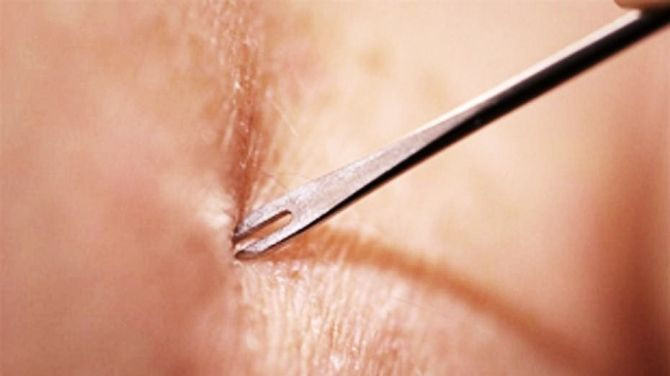Immune Cells May Be Stronger in Skin Than in Blood, Needle-less Vaccines the Future?

Scientists have previously thought that the immune system’s memory T cells, which protects the body by recognizing foreign invaders like bacteria, viruses and cancer cells to prevent re-infection, existed mostly in the bloodstream and lymph nodes, but the latest research reveals that resident memory T cells, memory cells prevalent in the skin, may actually be significantly stronger than circulating memory T cells.
The latest study published on Wednesday in the journal Nature, suggests that the fundamental part of the human immune system may actually reside in the body’s surface or epithelial tissues, and vaccination through those tissues, like the skin, gastrointestinal tract, lungs may actually trigger a far stronger immune response than circulating memory T cells in the blood.
The study, led by researchers Xiaodong Jiang, Rachael Clark and Thomas Kupper of Brigham and Women’s Hospital in Boston compared resident memory T cells against circulating memory T cells in mice to determine which type of immune cell was more effective in fighting against re-infection.
The team infected three different groups of laboratory mice with the same vaccinia virus, the primary component of the smallpox vaccine. The first group of mice had both circulating memory cells and skin resident memory cells, and the second and third group had either circulatory or resident memory cells.
Researchers then exposed each type of mouse with the vaccinia virus again to determine which type of memory T cell delivered a more effective immune response.
“The resident memory cells won hands down,” Kupper told The Scientist Magazine. “It wasn’t even a contest. They’re much more effective.”
The two groups of mice with active resident memory T cells had rid the infection in six days, regardless of whether circulating memory T cells were present. However the mice with just the circulating memory T cells took 20 days, more than three times the time of the other two groups to clear the virus.
Researchers said that the results show that the mice possessing only the circulating memory T cells were just slightly quicker at recovering from the virus compared to the control mice that had never been exposed to the virus and took 25 days to rid the virus.
Investigators also found that after infection, resident memory T cells lived not only at the site of the viral infection, but spread to all areas of the skin and remained for at least 6 months. Multiple additional infections in the skin led to an accumulation of even more resident memory T cells each time.
Other experts say that the findings that a vast population of stronger resident memory T cells found in peripheral organs were far more effective than circulating memory immune cells made sense because they are located in vulnerable parts of the body that are in most contact with the environment.
“In the past, people have conducted in vivo experiments that suggest resident memory and circulating memory cells confer comparable protection,” Onur Boyman, an immunologist at the University of Zurich who had previously identified some of the first resident memory T cells in the skin in 2004, told The Scientist. “This paper provides a nice step forward in showing that these resident memory cells are indeed more effective against a skin infection as compared to central memory cells.”
In 2006 Clark and Kupper had also found a large concentration of resident memory T cells in normal skin capable of triggering and maintaining the body’s immune reactions when there were no circulating T cells in the blood, and in 2011, they also found that those resident cells also existed in the lungs.
Kupper explained these memory T cells are may be located in our peripheral organs because these tissues are the body’s first line of defense against infection.
"The immune system provides the right T cells, at the right place and time, to protect us from an environment that is full of potentially harmful pathogens." Kupper said in a statement released on Wednesday.
He said that the latest findings also underlined the effectiveness of some preclinical vaccines models that deliver inoculations to upper layers of the skin tested in preclinical models, which have been shown to been more effective to conventional vaccine injections into the muscles of bloodstream.
"Putting this research in historical context, it helps explain the uniquely powerful efficacy of the first successful vaccine developed for smallpox by Jenner in 1796," Kupper said. "Syringes had not yet been invented, so Jenner administered the first vaccine by disrupting the upper layers of skin with a specialized needle, a process similar to how the vaccinia virus was delivered in our study. It is worth remembering that the smallpox vaccine remains the most effective vaccine in the history of medicine, resulting in the elimination of smallpox in human populations."
"Conventional vaccines are typically focused on optimizing the B cell arm of the immune system to create disease-fighting antibodies. In contrast, this study shows that a more effective path to immunity may be to engage this newly discovered part of the T cell arm of the immune system through a population of powerful immune cells that we now know reside in the skin, lung, gut, and other epithelial tissues," Kupper added.
Published by Medicaldaily.com



























